
Muted Architectural Tones Sergison Bates
Publisher
Petr Šmídek
29.10.2018 19:35
Petr Šmídek
29.10.2018 19:35
Czech Republic
České Budějovice
Jonathan Sergison
Stephen Bates
Sergison Bates architects
This year's autumn at the Budějovice House of Art will showcase two architectural studios. The first is the London-based office of Sergison Bates, founded in 1996 by the duo Stephen Bates (*1964) and Jonathan Sergison (*1964), whose conservative designs can be seen in England, Belgium, Switzerland, and Germany. One of their apartment buildings is located in nearby Vienna.
Jonathan Sergison graduated in 1989 from the Architectural Association in London. Before establishing his own office, he gained work experience in the top London studios under David Chipperfield and Tony Fretton. Since 2008, he has been a professor at a private academy in Mendrisio, Ticino. Since 2010, when he established a branch of the studio in Zurich, he has spent most of his time in Switzerland. Stephen Bates graduated in 1989 from the Royal College of Art in London, subsequently worked in Barcelona studios, and has been a full professor of urbanism at the Technical University of Munich since 2009.
The British studio Sergison Bates combines tradition with modern needs. It represents a moderate trend in architecture that creates "new forms using old methods." Their studio does not want to yield to the "tyranny of the new" in any way. They are fully aware of the significant historical footprint of European cities, where a relatively small continent offers an incredibly diverse palette of styles that we should not deprive ourselves of. Sergison Bates is fascinated by mundane everyday moments. They have abandoned the constant search for ever new diverse forms. They approach design in a reductive manner without exaggerated architectural ambitions. They avoid potential missteps by repeating and refining historical forms. The work of the Sergison Bates studio focuses primarily on residential construction. They pay particular attention to relating to the historical structure. At the same time, they strive to meet all current and future needs of modern European cities. Possible criticism that Sergison Bates's projects continuously repeat can be countered by referencing the work of Portuguese master Álvaro Siza, who has managed with just three materials and a few shapes for over half a century, yet still captivates with each new realization.
October exhibitions at the DUČB regularly bring the most prominent personalities from the world of traditional construction methods, who, after the era of modernism, minimalism, and other experiments, are trying to restore architecture its seriousness and put it back on solid foundations. In October 2013, Miroslav Šik, a long-time professor at ETH Zurich and one of the founders of "new-old building," presented to the Czech audience. In addition to an unforgettable lecture, this Czech native also held his first exhibition in the Czech Republic, considered one of the biggest architectural events of 2013. The relevance of "new-old building" in the Czech environment is evidenced by the fact that from this school year, Professor Šik will be teaching at the School of Architecture at the AVU in Prague, through which we can expect a strengthening of this analogical approach and a rejuvenation of the scene that the New Czech Work, led by Michal Kuzemenský and Jan Šépka, initiated in the 1990s.
Two years ago in October 2016, London’s Caruso St John appeared at the DUČB, who understand architecture as part of a broader artistic and social culture. A strong emphasis in the works of Adam Caruso and Peter St John is placed on material and construction issues. The resulting sensitive inspiration from history resists precise dating. Last autumn's lecture and exhibition by Zurich architect Peter Märkli at DUČB showcased the timeless work of a man who has developed a method over the decades to achieve ideal proportions that withstand fashion waves.
The current architectural scene consists of isolated stars building their brands with an unmistakable handwriting. If there could be traced any longer-term common trend, it would indeed be the aforementioned authors from London and Zurich, who strive to integrate their work into the surroundings, do not aim for violent innovations, and whose realizations can easily be mistaken for one another.
In contrast to functionalist or post-war apartment buildings, for which the most important factors were the speed of construction and the lowest price, analogous architects praise slowness and the use of quality materials that age beautifully and mostly outlive us. Miroslav Šik often mentions that the greatest source of inspiration for his Zurich apartment buildings comes from Renaissance Italian palaces, where the lime plaster can last for several centuries, wood turns silvery, and stone pavements wear down into beauty. A current theme not only for politicians is public space as a place for mutual meetings funded from shared resources. In temperate climates, however, we still spend more than 90 percent of our time inside buildings, which is why interior designs are one of the main tasks for Sergison Bates. They do not limit themselves to structural solutions and the selection of suitable materials but also play with "raumplan" (spatial plan) in the manner of their favorite Adolf Loos. In the most recent example of the Sergison Bates realization (the Nordbahnhof residential complex in Vienna, 2012), you can experience semi-public and semi-private spaces that offer a sufficiently spacious and dignified entrance to the apartment buildings connected with a place for communal sitting. This Viennese example hints at what Miroslav Šik means by "palazzo." Sergison Bates creates a welcoming microclimate of "space-ness," where the interaction of rooms ultimately creates small labyrinths far removed from pure functionalist schemas.
Since both partners of the Sergison Bates office teach at German schools, the term that best describes their work might be "die Stimmung" (atmosphere, mood). Peter Zumthor, one of the most significant Swiss architects today, titled his phenomenological book "Atmosphären." The concept used by Sergison Bates goes even further than merely evoking spatial atmospheres.
Jonathan Sergison graduated in 1989 from the Architectural Association in London. Before establishing his own office, he gained work experience in the top London studios under David Chipperfield and Tony Fretton. Since 2008, he has been a professor at a private academy in Mendrisio, Ticino. Since 2010, when he established a branch of the studio in Zurich, he has spent most of his time in Switzerland. Stephen Bates graduated in 1989 from the Royal College of Art in London, subsequently worked in Barcelona studios, and has been a full professor of urbanism at the Technical University of Munich since 2009.
The British studio Sergison Bates combines tradition with modern needs. It represents a moderate trend in architecture that creates "new forms using old methods." Their studio does not want to yield to the "tyranny of the new" in any way. They are fully aware of the significant historical footprint of European cities, where a relatively small continent offers an incredibly diverse palette of styles that we should not deprive ourselves of. Sergison Bates is fascinated by mundane everyday moments. They have abandoned the constant search for ever new diverse forms. They approach design in a reductive manner without exaggerated architectural ambitions. They avoid potential missteps by repeating and refining historical forms. The work of the Sergison Bates studio focuses primarily on residential construction. They pay particular attention to relating to the historical structure. At the same time, they strive to meet all current and future needs of modern European cities. Possible criticism that Sergison Bates's projects continuously repeat can be countered by referencing the work of Portuguese master Álvaro Siza, who has managed with just three materials and a few shapes for over half a century, yet still captivates with each new realization.
October exhibitions at the DUČB regularly bring the most prominent personalities from the world of traditional construction methods, who, after the era of modernism, minimalism, and other experiments, are trying to restore architecture its seriousness and put it back on solid foundations. In October 2013, Miroslav Šik, a long-time professor at ETH Zurich and one of the founders of "new-old building," presented to the Czech audience. In addition to an unforgettable lecture, this Czech native also held his first exhibition in the Czech Republic, considered one of the biggest architectural events of 2013. The relevance of "new-old building" in the Czech environment is evidenced by the fact that from this school year, Professor Šik will be teaching at the School of Architecture at the AVU in Prague, through which we can expect a strengthening of this analogical approach and a rejuvenation of the scene that the New Czech Work, led by Michal Kuzemenský and Jan Šépka, initiated in the 1990s.
Two years ago in October 2016, London’s Caruso St John appeared at the DUČB, who understand architecture as part of a broader artistic and social culture. A strong emphasis in the works of Adam Caruso and Peter St John is placed on material and construction issues. The resulting sensitive inspiration from history resists precise dating. Last autumn's lecture and exhibition by Zurich architect Peter Märkli at DUČB showcased the timeless work of a man who has developed a method over the decades to achieve ideal proportions that withstand fashion waves.
The current architectural scene consists of isolated stars building their brands with an unmistakable handwriting. If there could be traced any longer-term common trend, it would indeed be the aforementioned authors from London and Zurich, who strive to integrate their work into the surroundings, do not aim for violent innovations, and whose realizations can easily be mistaken for one another.
In contrast to functionalist or post-war apartment buildings, for which the most important factors were the speed of construction and the lowest price, analogous architects praise slowness and the use of quality materials that age beautifully and mostly outlive us. Miroslav Šik often mentions that the greatest source of inspiration for his Zurich apartment buildings comes from Renaissance Italian palaces, where the lime plaster can last for several centuries, wood turns silvery, and stone pavements wear down into beauty. A current theme not only for politicians is public space as a place for mutual meetings funded from shared resources. In temperate climates, however, we still spend more than 90 percent of our time inside buildings, which is why interior designs are one of the main tasks for Sergison Bates. They do not limit themselves to structural solutions and the selection of suitable materials but also play with "raumplan" (spatial plan) in the manner of their favorite Adolf Loos. In the most recent example of the Sergison Bates realization (the Nordbahnhof residential complex in Vienna, 2012), you can experience semi-public and semi-private spaces that offer a sufficiently spacious and dignified entrance to the apartment buildings connected with a place for communal sitting. This Viennese example hints at what Miroslav Šik means by "palazzo." Sergison Bates creates a welcoming microclimate of "space-ness," where the interaction of rooms ultimately creates small labyrinths far removed from pure functionalist schemas.
Since both partners of the Sergison Bates office teach at German schools, the term that best describes their work might be "die Stimmung" (atmosphere, mood). Peter Zumthor, one of the most significant Swiss architects today, titled his phenomenological book "Atmosphären." The concept used by Sergison Bates goes even further than merely evoking spatial atmospheres.
At last year’s spring lecture by Jonathan Sergison at CAMP in Prague, the audience pointed out to the author that his buildings seem boring, which is justified in today's entertainment industry. We live in a constant desire for something to amuse us while we remain passive ourselves. Sergison Bates deliberately chooses muted tones so that real colorful life can unfold against the backdrop of their houses. The buildings of Sergison Bates age naturally without the need for excessive maintenance costs. The saved energy and resources can then be dedicated to a fulfilling metropolitan life.
Written for Milk & Honey, #26, pp. 10-11
The English translation is powered by AI tool. Switch to Czech to view the original text source.
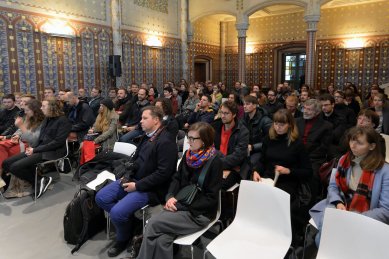
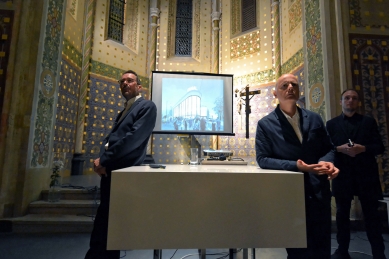


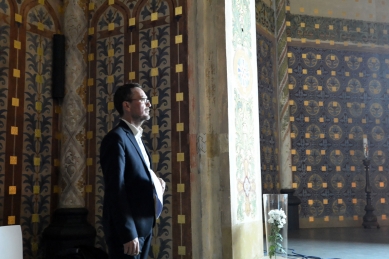
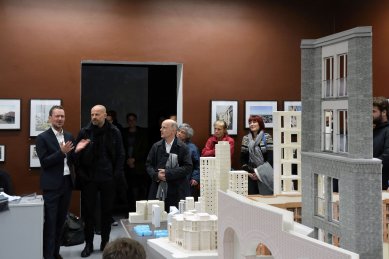
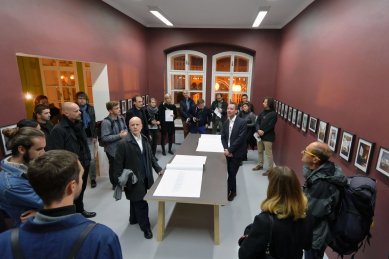
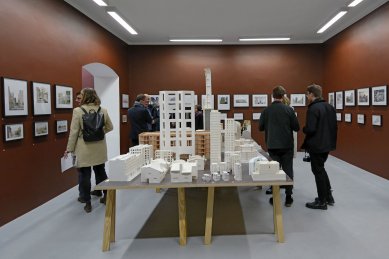
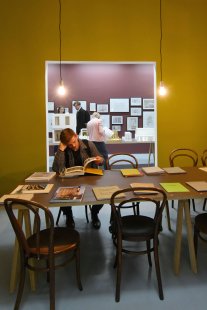
0 comments
add comment











